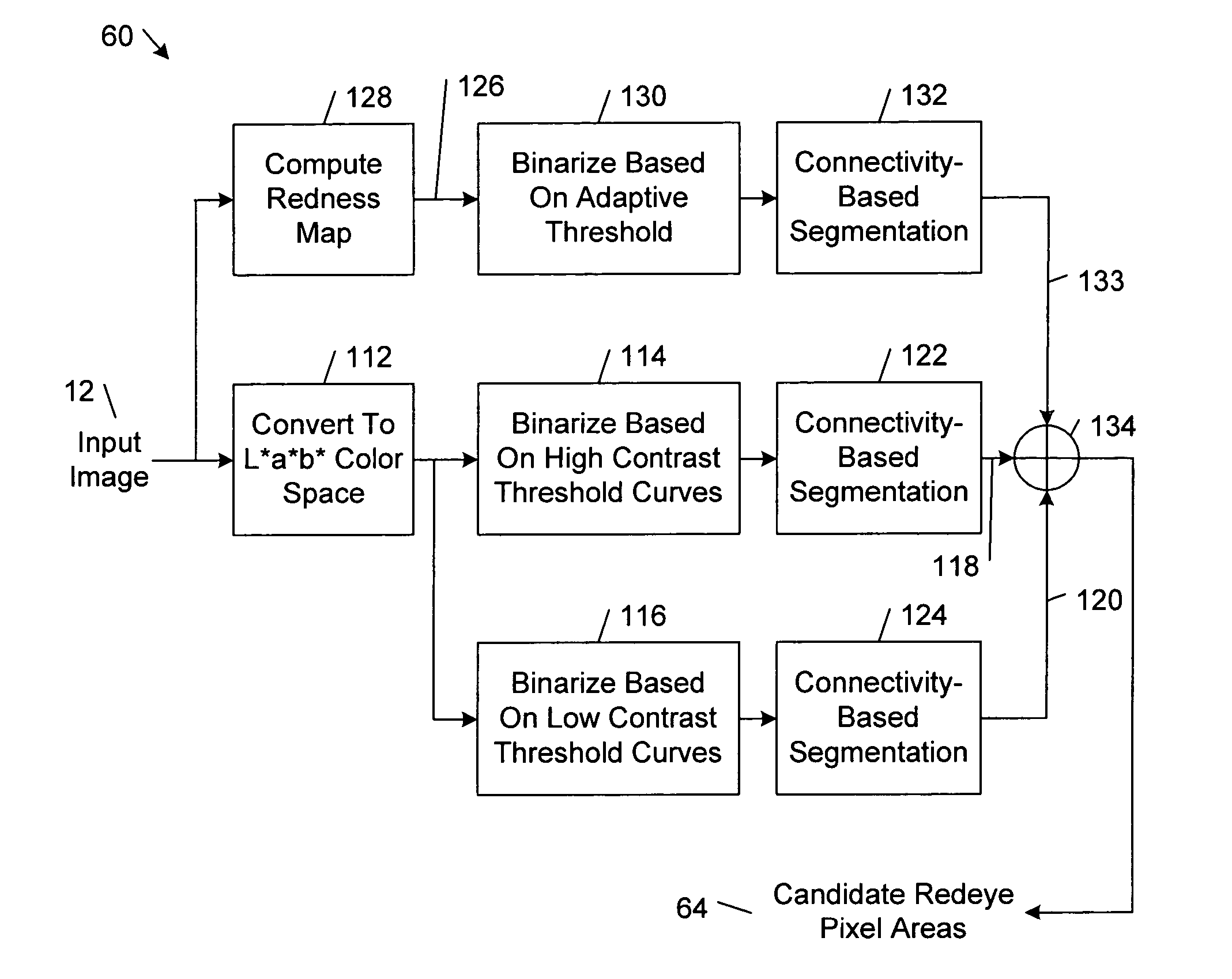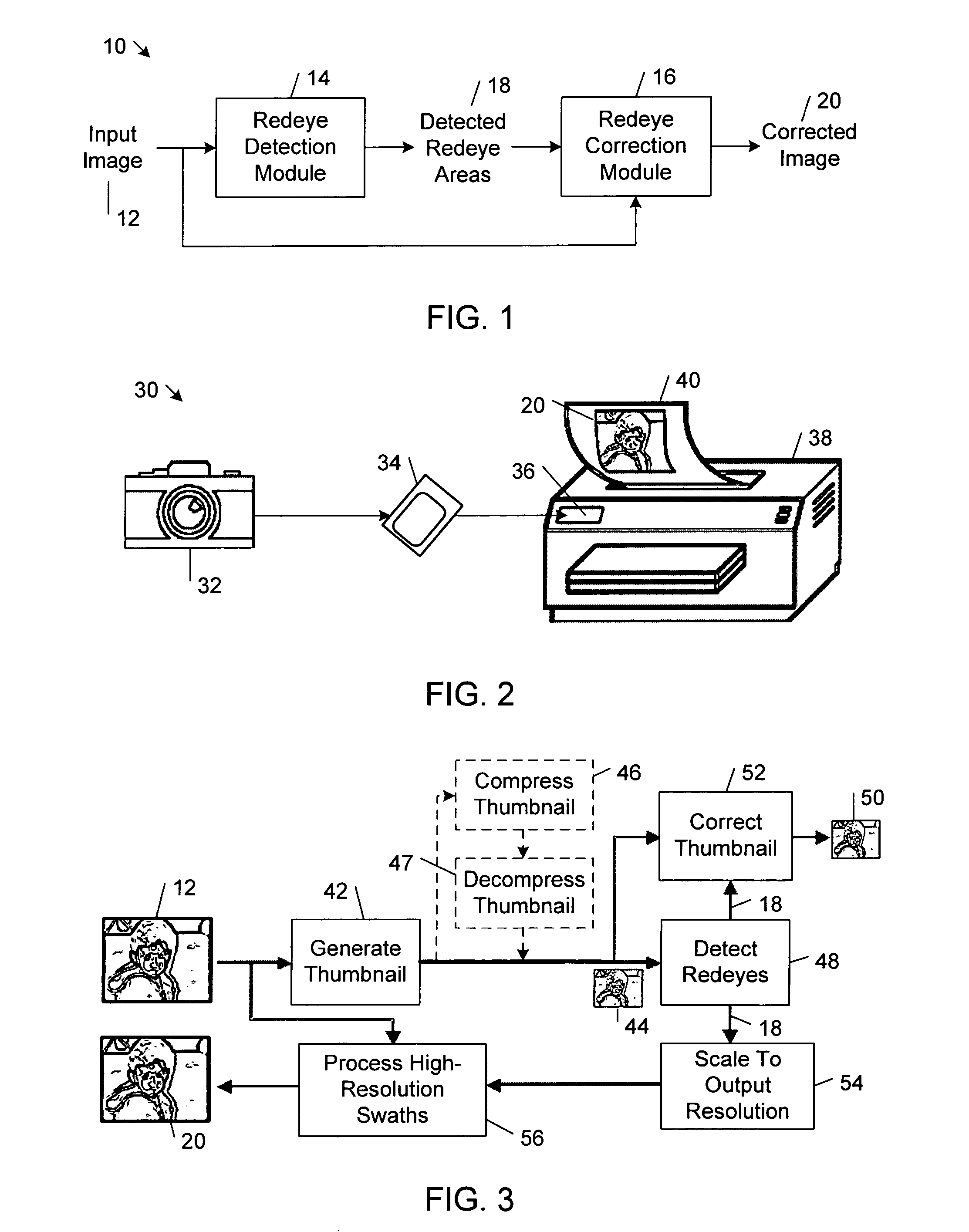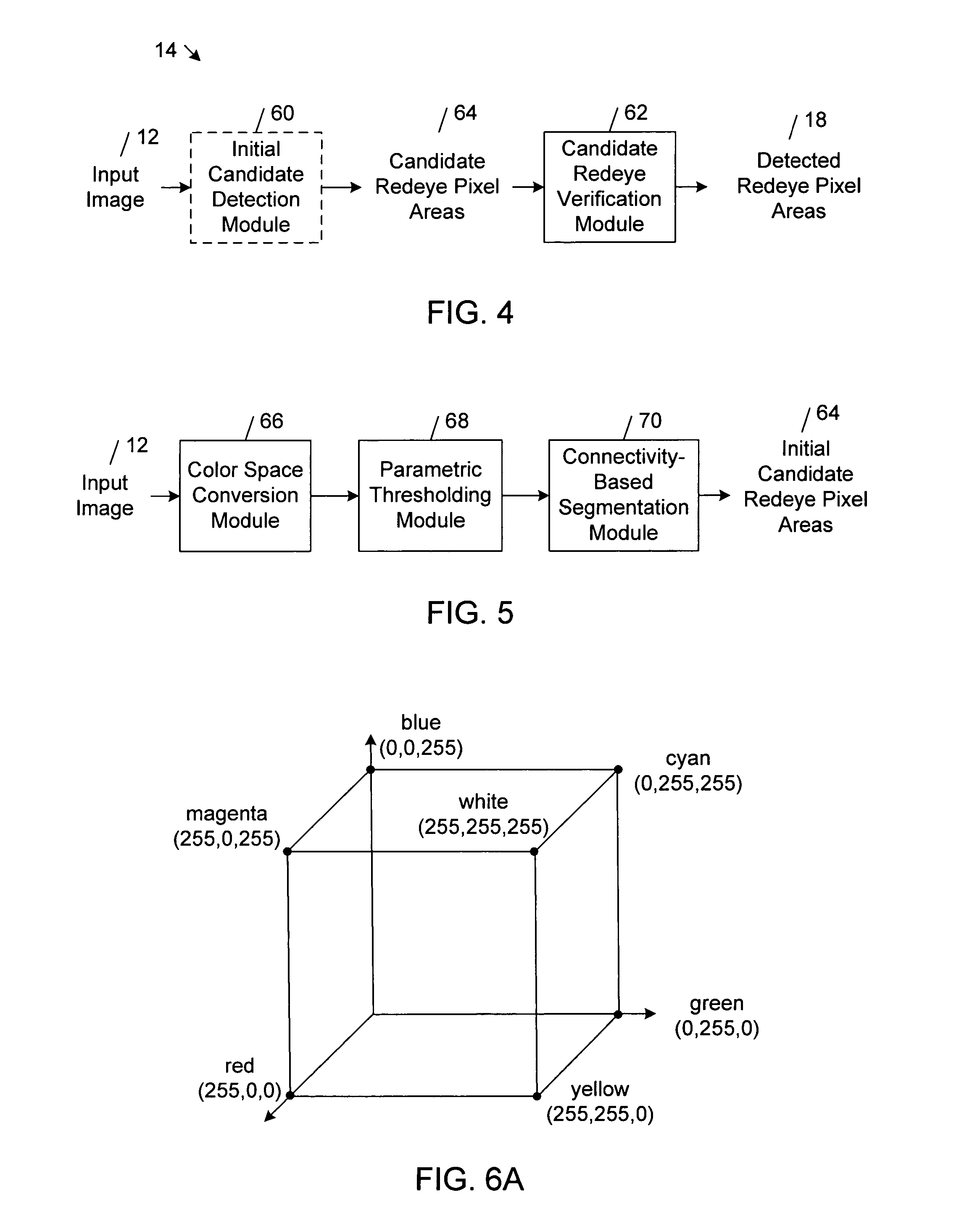Detecting and correcting redeye in an image
a technology for applied in the field of detecting and correcting redeye in an image, can solve the problems of reducing, but not eliminating, redeye, and the reduction of face detection-based automatic redeye reduction techniques, which have high computation and memory resource requirements, and cannot detect faces that are rotated in-plane or out-of-plane with respect to the image plan
- Summary
- Abstract
- Description
- Claims
- Application Information
AI Technical Summary
Problems solved by technology
Method used
Image
Examples
Embodiment Construction
In the following description, like reference numbers are used to identify like elements. Furthermore, the drawings are intended to illustrate major features of exemplary embodiments in a diagrammatic manner. The drawings are not intended to depict every feature of actual embodiments nor relative dimensions of the depicted elements, and are not drawn to scale. Elements shown with dashed lines are optional elements in the illustrated embodiments incorporating such element.
In general, the redeye detection and correction embodiments described herein may be incorporated into any system or method in which such functionality is desired, including embedded environments, which typically have limited processing and memory resources.
I. System Overview
FIG. 1 shows an embodiment of a system 10 for detecting and correcting redeye pixels in a digital input image 12 that includes a redeye detection module 14 and a redeye correction module 16. Redeye detection module 14 automatically detects a...
PUM
 Login to View More
Login to View More Abstract
Description
Claims
Application Information
 Login to View More
Login to View More - R&D
- Intellectual Property
- Life Sciences
- Materials
- Tech Scout
- Unparalleled Data Quality
- Higher Quality Content
- 60% Fewer Hallucinations
Browse by: Latest US Patents, China's latest patents, Technical Efficacy Thesaurus, Application Domain, Technology Topic, Popular Technical Reports.
© 2025 PatSnap. All rights reserved.Legal|Privacy policy|Modern Slavery Act Transparency Statement|Sitemap|About US| Contact US: help@patsnap.com



